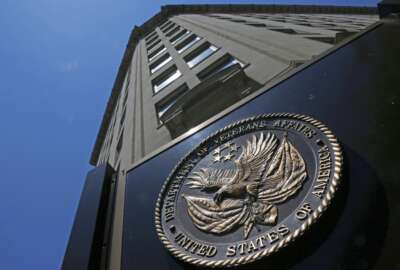VA’s IT shop defends raises under Special Salary Rate amid planned budget cuts
The Department of Veterans Affairs’ IT shop is preparing for budget cuts across some of biggest priorities next year — but not for its growing workforce.
The Department of Veterans Affairs’ IT shop is preparing for budget cuts across some of its priority areas next year — but not for its growing workforce.
VA’s Office of Information and Technology (VA OIT) is requesting $7.6 billion for IT systems and telecommunications support in its FY 2025 budget proposal. The department’s tech office would also receive $1.4 billion to modernize IT systems through the Toxic Exposures Fund authorized by the PACT Act. Its FY 2025 budget request amounts to a $49 million, or 0.6%, cut from enacted levels.
Kurt DelBene, VA’s assistant secretary for information and technology and chief information officer, said the 2025 budget request reflects the overall federal spending caps the Biden administration and congressional Republicans agreed to, as part of a deal to lift the federal debt ceiling last year.
“It is a challenging budget for us, I’ll say that upfront. It will require us to be very focused in where we invest. We have taken the initiatives that the administration overall wants us to focus on, and we agree with those initiatives,” DelBene told members of the House VA Committee on Wednesday. “My goal, and I think this is accomplishable, is we will not hamper veteran care as a result.”
VA financial officials told reporters in March that OIT would get a “covers-the-basics” budget in 2025.
“We think there are difficult choices that have been made across the entire administration, so I respect the challenge of making those cuts,” DelBene said.
Among its priorities, VA OIT plans to increase cybersecurity spending by nearly 30%, and will continue to offer a Special Salary Rate to its employees.
The SSR, which went into effect last summer, resulted in an average 17% for VA tech and cyber workers — and has led to significantly higher retention rates. VA OIT expects to grow its tech workforce to 8,544 employees next year — about a 2% increase from its current headcount.
The FY 2025 budget provides $671 million for cybersecurity — a 28% increase from enacted levels.
Timothy Puetz, VA deputy CIO and VA OIT’s chief financial officer, called the surge in cybersecurity spending a “small drop in the bucket of where we need to go with our cybersecurity.”
“More requirements are coming in from the National Cybersecurity Strategy from the White House, and as we begin to identify how cybersecurity is also part of the way we need to modernize, so they go hand in hand,” Puetz said. “The intent is to continue to move cybersecurity in the direction it needs to go at the VA.”
Members of the House VA Committee, however, remain wary that higher VA OIT salaries are taking scarce dollars away from technology improvements meant to improve service delivery to veterans.
VA OIT’s 2025 budget would reduce IT modernization funding by more than 80%, and cut its infrastructure readiness program, which is focused on updating the department’s legacy IT systems, by more than 65%.
The budget plan also calls for cutting funding to VA.gov by $22 million — or more than 20%. VA OIT uncovered two errors on VA.gov last year that may have affected disability claims for more than 100,000 veterans. However, DelBene said more cybersecurity spending won’t take away resources to address these website issues.
“We think of certain things as must-haves. Cybersecurity is just an example of another must-have,” DelBene said. “In the case of VA.gov, the remediation around tracking, around making sure we don’t have those problems — again, those are must-haves. What it will impact is the speed with which we deliver new features and new capabilities into that project.”
Subcommittee Chairman Matt Rosendale (R-Mont.) said VA OIT’s budget request “seems to prioritize employee salaries over everything else.”
“What we’re seeing here in this budget is a starving of the actual purpose of your department — technology — and we’re plussing up HR. That’s creating a long-term problem,” Rosendale said.
Ranking Member Sheila Cherfilus-McCormick (D-Fla.) said she’s concerned the “modest” 5% increase in VA’s OIT workforce budget won’t keep pace with the salaries it’s offering to employees under the SSR.
“I fear that supporting those SSRs will force it to decrease the number of its people it has,” Cherfilus-McCormick said. “Expecting VA’s IT folks to do more work with less people is going to have a lasting impact on retention. The pay raises won’t be enough to prevent people from resigning.”
VA’s inspector general office found the department recently paid nearly $11 million in bonuses to VA career executives who were ineligible to receive the awards. Rosendale said these improperly paid bonuses should make lawmakers wary of VA OIT’s prioritization of the SSR amid “lopsided” cuts to other priorities.
“It can be easy to hand out raises with other people’s money,” Rosendale said. “I am very concerned that an unsustainable payroll can actually undermine recruitment and retention, and drive away top talent.”
DelBene, however, said the SSR remains essential to hire and retain in-demand tech workers — and doesn’t take away from other budget priorities.
“The SSR is not a significant portion of our budgets, in the absolute terms. And I would do it again, because we need the best. The most important resource we have as an organization, bar none, is our people,” he said.
Nathan Tierney, VA deputy chief information officer and VA OIT’s chief people officer, said VA OIT made 1,000 recent hires under the SSR. Nearly half of those hires took place this fiscal year.
Over the past nine months, VA OIT saw an 80% increase in qualified applicants per job announcement. The number of vacancy announcements VA OIT needed to repost fell by nearly half.
Tierney said that since the SSR went into effect, VA OIT has seen 64% fewer separations and 46% fewer retirements.
Nearly a third of the OIT workforce are retirement-eligible, and 46% will be retirement-eligible in the next three to five years.
“Not only has that helped us in the retention front, it’s also helped us in the attraction front and recruiting that top-tier talent to allow us to be competitive,” Tierney said. “We’re continuing to monitor and keep that finger on the pulse and see if something else needs to be adjusted.”
The Special Salary Rate narrows — but doesn’t eliminate — a major pay disparity between what the government and private tech companies can afford to pay top talent.
An interagency report in 2022 found a pay gap of 66% between public and private sector IT workers. Tierney said the data shows compensation remains a “top attraction and attrition driver.”
“If I want to hire a software developer in the federal government, I can’t pay them enough to join — to get somebody to come out of Amazon, or Meta or whatever other tech organization. So we had to do something,” Tierney said.
The VA is the only agency to implement this SSR, thanks to new authorities in the PACT Act to set recruitment and retention incentives. It submitted an SSR proposal to the Office of Personnel Management in early 2023. OPM approved the SSR, but implementation stalled governmentwide.
Tierney said VA OIT is able to reduce the public-private tech pay gap in half using the SSR. About 7,000 employees have received the SSR. However, some higher-level positions are feeling the full effect of that pay bump because of governmentwide pay caps.
Copyright © 2025 Federal News Network. All rights reserved. This website is not intended for users located within the European Economic Area.
Jory Heckman is a reporter at Federal News Network covering U.S. Postal Service, IRS, big data and technology issues.
Follow @jheckmanWFED






